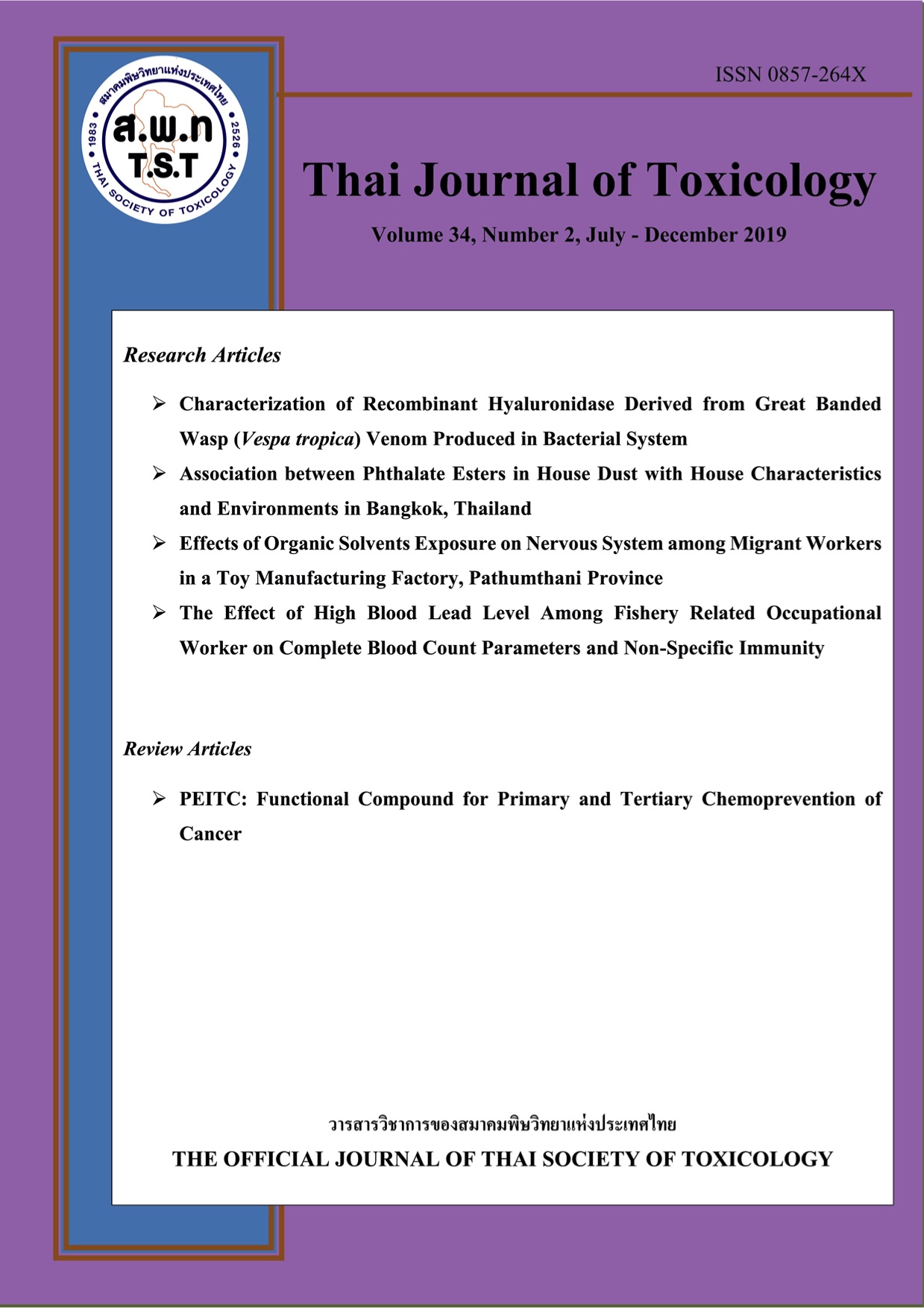PEITC: Functional Compound for Primary and Tertiary Chemoprevention of Cancer
Main Article Content
Abstract
Phenethyl isothiocyanate (PEITC) is a phytochemical found in cruciferous vegetables such as cabbage, watercress, and kale. Compelling evidences demonstrate that PEITC could both inhibit metabolic activation and activate phase II detoxification of several carcinogens. Clinical studies confirm its effect in reducing lung cancer carcinogen in tobacco smokers. The findings highlight PEITC as a primary chemopreventive agent to prevent the initiation of carcinogenesis. Interestingly, the very same compound PEITC also shows promising effects in selectively removal of cancer cells in vitro and in vivo. The anti-cancer mechanisms are mostly mediated through glutathione conjugation and redox balance shift toward increased oxidative stress leading to cell death. Those evidences raise PEITC as a new tertiary chemopreventive agent to retard progression of cancer. Toxicological studies showed that PEITC could induce bladder carcinogenesis if given at high concentration and long period. However, it is safe at 40 mg per day in human. This review summarizes the functional properties and roles of PEITC in primary and tertiary chemoprevention. Safety of PEITC is discussed. Further clinical investigations of PEITC are warranted to prove its primary and tertiary preventive effects in high-risk people and cancer patients, respectively, and evaluate long term safety and pharmacokinetic profiles in cancer patients.


